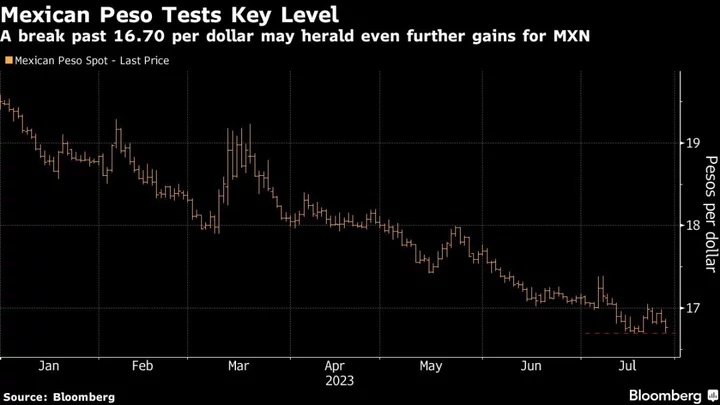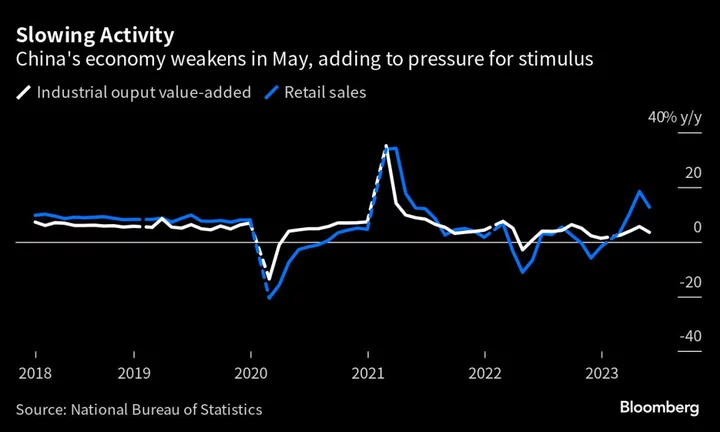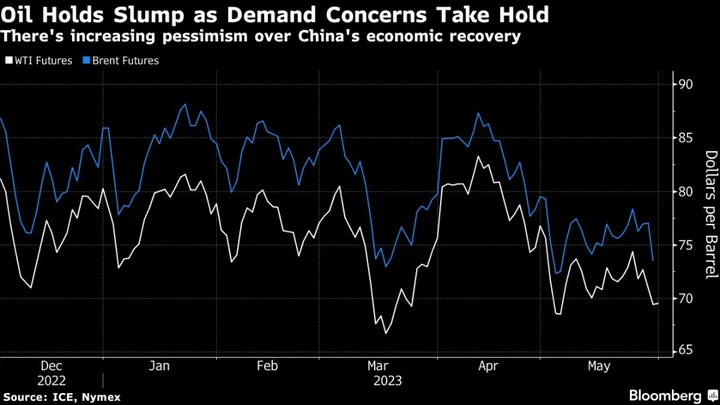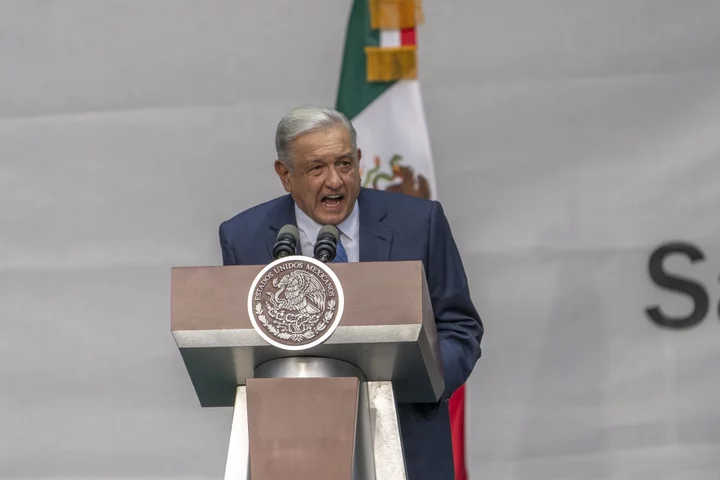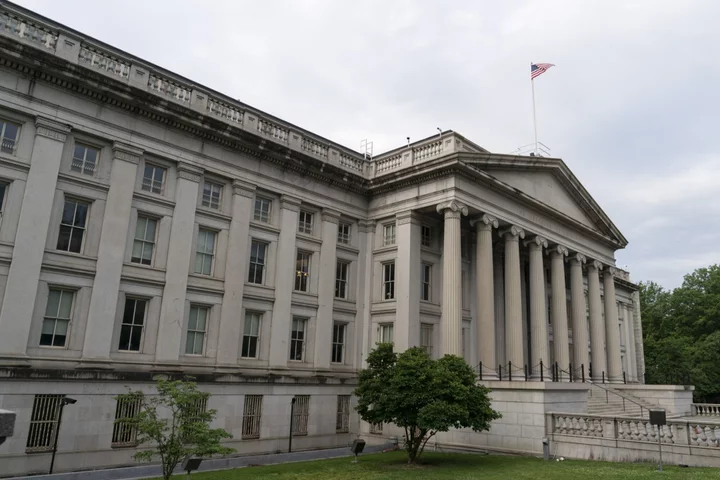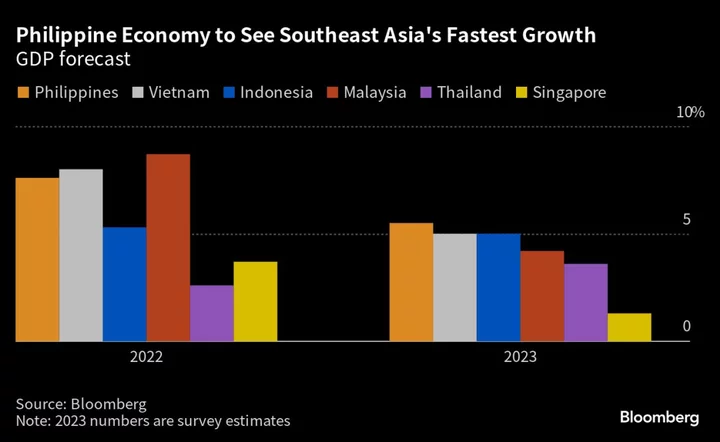Foreign-exchange traders are tuning out calls that the Mexican peso is overvalued, leaving the currency poised to test whether it can push past this year’s high as the surprising resilience of the US economy eases concerns about a recession.
The peso firmed as much as 0.8% to 16.7037 per dollar on Thursday, initially leading gains among major currencies, as surprisingly strong US economic growth data added to optimism stoked by Fed Chair Jerome Powell’s comment Wednesday that his staff had abandoned their forecast for a US recession. The currency later lost those gains to be little changed after failing to break below the 16.70 level amid a broad move higher in the US dollar, which was fueled by a jump in Treasury yields.
Mexico has eclipsed China to become the second-biggest US trading partner behind Canada and a recession north of the border has been one of the main risks that analysts have warned could derail the currency’s gains, which have been called “relentless” and earned it the moniker of the “super peso.”
“A sound US economy along with a Fed that has likely ended the tightening cycle can result in additional peso strength,” said Brendan McKenna, an emerging-markets economist and FX strategist at Wells Fargo Securities LLC.
The peso’s gains on Thursday still left it in striking distance of a new year-to-date high as it traded around its strongest levels since late 2015. If the currency can break past the strong technical level at 16.70 per dollar, then “a move to 16.50 is not out of the question,” McKenna said.
The currency has gained nearly 16% this year and is trailing only Colombia’s peso across emerging markets. It has been supported by expectations that Mexico will be slow to lower interest rates, as well as strong remittances from those who’ve emigrated and the so-called nearshoring trend of more manufactures migrating to the country to be closer to the US.
Analysts have been baffled by the currency’s gains. Back at the start of the year, the median of analysts surveyed by Bloomberg forecast the peso would be trading at 20.15 per dollar in the third quarter. Just earlier this week Capital Economics warned the currency was set for an “abrupt fall” in the coming months once the US enters a recession.
“The Mexican peso’s relentless rise against the US dollar and other major currencies is increasingly at odds with macroeconomic fundamentals,” Jonathan Petersen, a senior market economist at the firm wrote in a note Tuesday.
But analysts at JPMorgan Chase & Co. said in a note on Wednesday that the peso has “entered a new chapter” of lower volatility and investors need to shed their outdated expectations that the currency will always be the favored target of speculators whenever risk sentiment sours.
Analysts led by Saad Siddiqui said that three factors had laid the groundwork for a structural shift in how the peso trades. Over the last five years, remittances have doubled to around $60 billion a year, which more than covers the country’s trade deficit.
Meanwhile, there has been a decline in the use of the pesos as an “all-purpose” hedge against risks in emerging markets as other Asian currencies have become more liquid and offer alternatives to shorting the peso, the report said. Lastly, the buzz around nearshoring is likely to start showing up in hard data over the next two years, adding more flows on top of record remittances.
“While the Mexican peso has been considered a high-beta risk proxy currency for much of the past two decades, we think it is time investors shed this outdated perception,” the JPMorgan analysts wrote.

